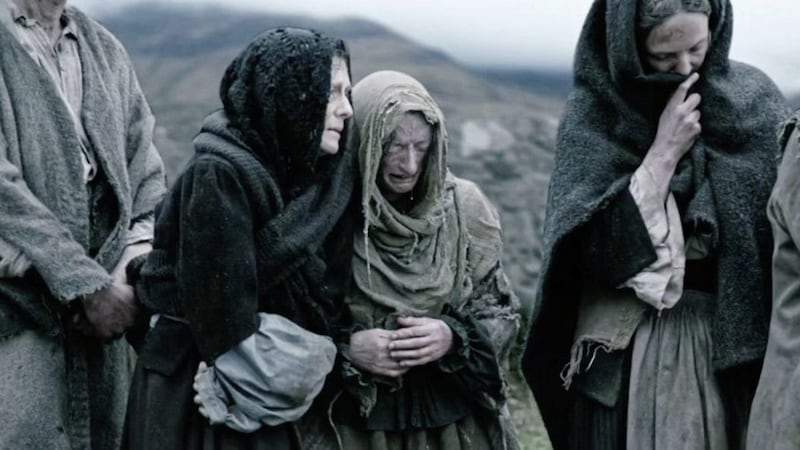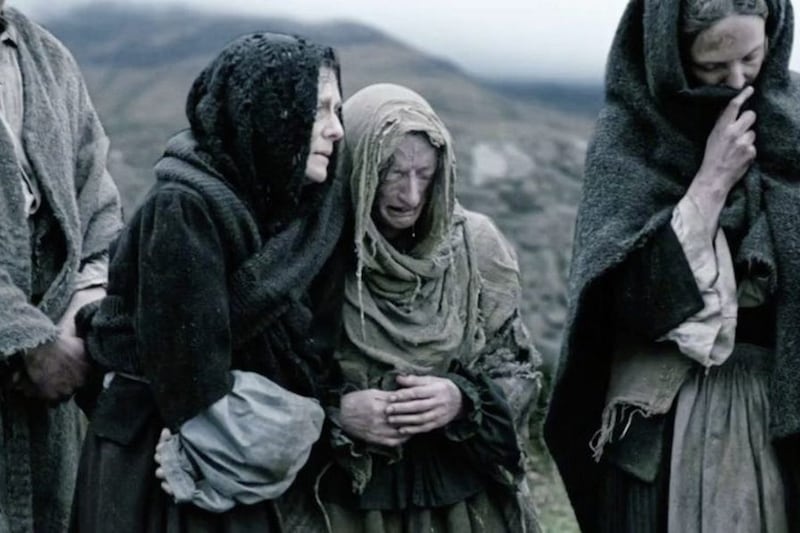PROOF that a good film can serve as a catalyst in leading people to learn more about a particular subject is amply provided by Black 47, now on general release. While it is foremost an action-based thriller, the fact that it is set against the background of the Great Famine should encourage a wider interest in this most cataclysmic event, that shaped Ireland for generations.
It is still too little known that the Famine affected all corners of this island and – and, yes, all of Ulster. But that is not the fault of this well-made film which is indeed a vehicle for entertainment, with a plot driven by an ex-Connaught Ranger seeking revenge against landlords and agents of the crown in the desolate hills of Connemara.
Anyone, like this writer, involved in teaching about the impact of the Famine minus visual material, since photography did not exist in Ireland then, will find Black 47 a great spur in encouraging people to learn more.
Credit must be given for the cinematography as well as a script compacting an accurate narrative of the Famine into 100 minutes. Using etchings from The London Illustrated Weekly showing how the Famine devastated Ireland, the producers skilfully open the film using grey and sepia tones, underscoring the helplessness that gripped the country and its starving people.
The early sequence showing a recreation of a deserted Famine village is taken directly from the 'Moveen Evictions' of Christmas 1847 in Co Clare when dozens of homes were tumbled by the landlord's agents, backed by the constabulary, their inhabitants driven to the roads.
The harshness of the conditions portrayed in Black 47 was driven home by the prestigious British Medical Journal in its September 22 edition with its report from the same date in 1847 citing the high numbers of people, including doctors, being felled by the "contagion of the famine fever".
"Each successive number of this Journal," the account stated, "records the loss of promising numbers of the profession". Describing one so-called rural Irish "fever hospital" as comprised of the "mud walls of an old cottage, eked out with boarding and covered with straw" the Journal directed blame at the "authorities whoever they may be".
We were also reminded that the upheaval caused by the Famine continued to strike people down even as they tried to escape Ireland, as indicated by the account from these pages on the 165th anniversary of the deaths of over 350 Irish when the their ship bound for Montreal sank after crashing off rocks of the outer Hebrides on September 30 1853.
However, the weight of the Famine on all of Ulster and its communities still cries out for a greater awareness. While the devastation in Donegal was indeed severe, the impact of the Famine on north east Antrim, which Daniel O'Connell described on February 1846 in the British House of Commons, was as bad as in any of the worst-affected parts of Ireland.
The reality was similar in counties Fermanagh and Armagh where in the latter case the overall loss of some 40 per cent of the population was on a par with such hard-hit areas as Cork, Clare, and Mayo.
Likewise, as Gerard MacAtasney has shown, the decline in overall population in north east Antrim during the Famine owing to death and immigration was felt largest by Protestants, accounting for three quarters of an overall decline in population of 36 per cent in Kilwaughter and likewise for a similar portion of the 22.7 per cent overall decline in Ballintoy.
While in Belfast itself, the Board of Guardians perversely won praise from Westminster for keeping a limit on public expenditure amid harrowing scenes of deaths from starvation, typhus and cholera on its streets, across the Lagan Dr James Murray laboured at personal risk at the Bridge End Medical Dispensary in Ballymacarrett, caring for over 6,000 cholera and typhus victims during the Famine.
Plans are now under way for the dedication of a memorial to Dr Murray near Donegall Quay in the city, at the culmination of a walk for hunger in the present day, honouring those who perished from all Belfast communities during the Great Famine and involving members from the Ballynafeigh Cultural and Heritage Society as well as members of Bredagh GAC among others.
:: Dr Francis Costello, a contributor to The Meaning of Famine, published by Leicester University Press, is also writing a history of the Great Famine's global impact.





